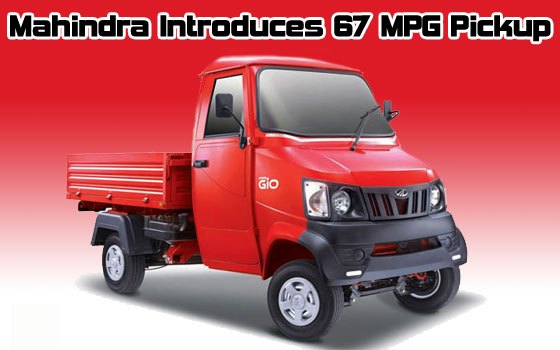India Institutes Star Ratings For Efficiency
The news coming out of India has been dominated by talk of the booming small car market, there’s another development which deserves some attention. The Economic Times of India reports that after two years of testing, India’s government is about to roll out a star rating system for (get this) fuel efficiency. The star rating system is voluntary for the first year, but starting next year the system becomes mandatory. The ET explains:
The proposed label will not only suggest the new car’s ideal mileage but also tell the buyer how the car performs compared to other models in the same category. The categories would be created on the basis of the vehicle’s weight. The best performer would be given 5 stars and the others would get fewer stars depending on their mileage. At the moment, sources in the government suggest not many cars are able to hit the top category.
Quick, someone bring me the forms I need to fill out to register my displeasure!
There have, after all, been a few issues with the program’s rollout.
The two key issues that kept propping up were under what law the regulations should be brought in for setting standards and implementing them and whether the measure should be the mileage per litre of fuel consumed or carbon dioxide emissions. A road transport ministry committee carried on working in parallel to the Bureau of Energy Efficiency (BEE) and recommended that carbon dioxide-based standards should be used.
The BEE and the power ministry, later backed by the [Prime Minister], kept insisting that a simple and consumer friendly measure had to be in kilometres per litre and that it also aided the government’s objective of regulating the demand for costly oil imports. With more than 2 million cars being added to Indian roads every year, this had been identified as a key component of demand-side management of oil prices.
But a committee set up by the road transport ministry recommended carbon dioxide-based standards. Later, studies found that the standards suggested were so lax that cars sold in 2017 could have continued to run at worse standards than those prevalent in the country in 2007.
Finally, the power ministry and BEE moved to put the debates behind them writing off the last of their letters to other stakeholders to respond. Not getting any response, the ministry has now decided to launch its programme.
The EPA rating system is hardly perfect, as evidenced by the Volt’s 230 MPG “rating” and the apparent gaming by models like the Ford Fusion Hybrid, but at least MPGs communicate significantly more nuance than a one-to-five star rating system. “There is no opposition from SIAM on fuel efficiency rating . . . but the industry is wondering what the star rating will offer to the consumers,” the president of the Society of Indian Automobile Association tells Rediff. We agree. Efficiency ratings will always be imperfect, but MPG ratings will always be better than a bureaucrat-designed star rating system.
More by Edward Niedermeyer
Latest Car Reviews
Read moreLatest Product Reviews
Read moreRecent Comments
- Lou_BC Maybe if I ever buy a new car or CUV
- Lou_BC How about telling China and Mexico, we'll accept 1 EV for every illegal you take off our hands ;)
- Analoggrotto The original Tassos was likely conceived in one of these.
- Lorenzo The unspoken killer is that batteries can't be repaired after a fender-bender and the cars are totaled by insurance companies. Very quickly, insurance premiums will be bigger than the the monthly payment, killing all sales. People will be snapping up all the clunkers Tim Healey can find.
- Lorenzo Massachusetts - with the start/finish line at the tip of Cape Cod.

































Comments
Join the conversation
Does the driver stand up to drive this thing? If they don't institute impact star ratings too, I think I see this as a frontal impact vertical coffin.
You laugh but we drove these kinds of trucks in Italy often. They were slow to accelerate, tippy doing had turns (worse in three wheel form), noisy, and the heater was a suggestion rather than something useful. Still - they were capable little trucks for short distances carrying a few hundred pounds. The ones we drove were made by Piaggio. Still today if I was in a semi-isolated environment - that is, not competing with large American style trucks - where either the roads were empty or the other vehicles were tiny too - and I needed to move stuff 10-15 miles, I would have no problem driving one of these. They Piaggios would run about 40 mph flat out but they were happiest running 25 mph or so. A person has to think about these kinds of vehicles in context. Don't think about them at the same way you consider a Ford Super Duty. Think "better than a pushcart" or "better than a scooter adapted to carry stuff". When gasoline started climbing past $4 a while back I was already thinking - hmmm, I only commute 7 miles. I'd drive one of these if it was cheap to buy and because I knew they were really frugal. Somebody else had the same idea and for a while I saw an electric three wheeler running around town. On the flip side driving a $500 vehicle instead of a $10K vehicle buys alot of gasoline too.